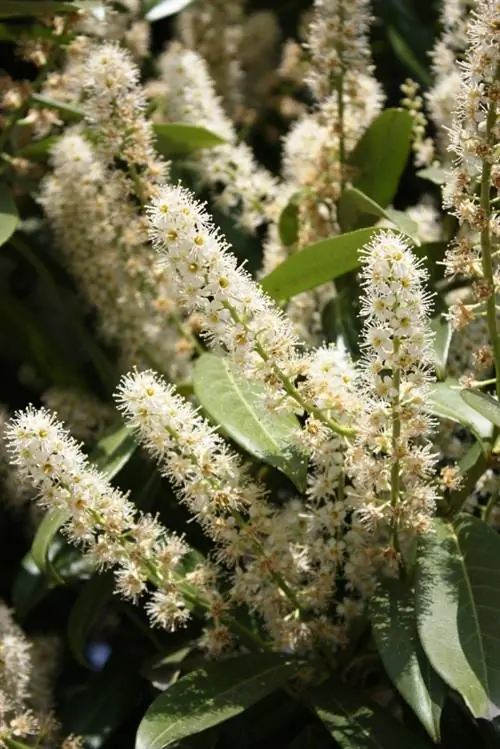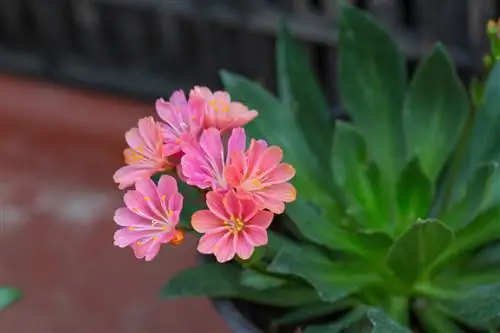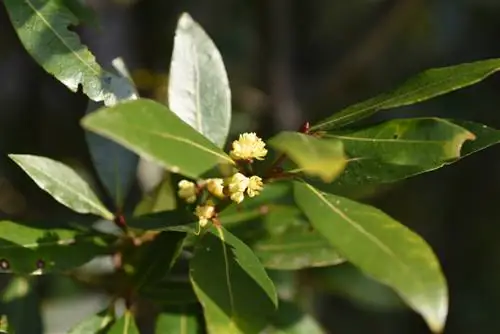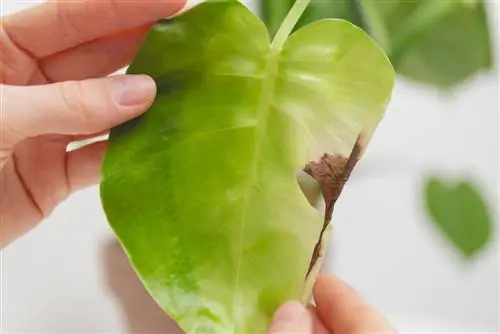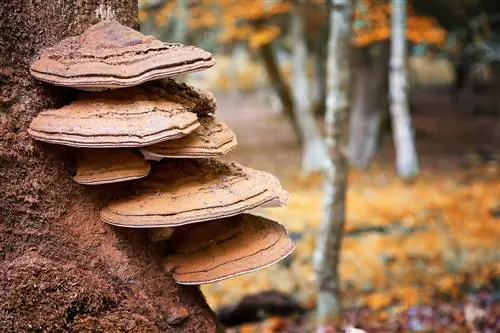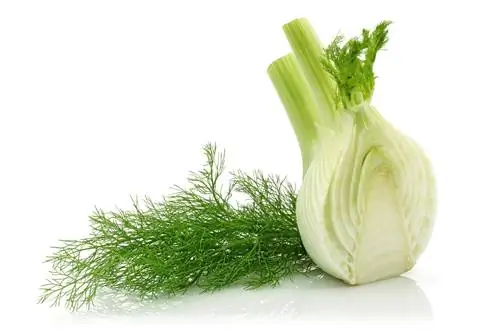- Author admin [email protected].
- Public 2023-12-16 16:46.
- Last modified 2025-01-23 11:20.
Many garden owners suspect pests when they discover unsightly holey leaves on the cherry laurel. However, insects or animals are only very rarely responsible for pitting. The holes in the foliage are rather the plant's reaction to an infestation with fungi or, more rarely, bacteria.
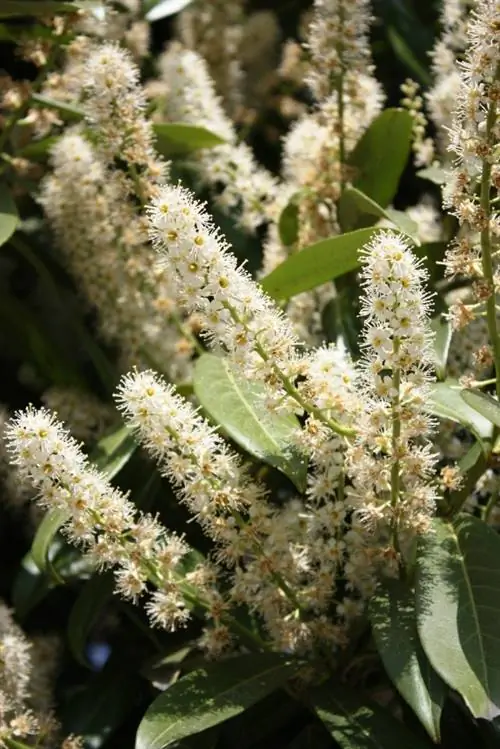
Why does my cherry laurel have holes in its leaves?
Holes in cherry laurel are usually due to fungal infestation such as shotgun disease or bacterial infestation such as Pseudomonas syringae. To combat the problems, infected parts should be removed, the bush thinned out and damaged plant parts disposed of with household waste.
Infestation with the fungus tigmina carpophila (shotgun disease)
On the leaves infected with gunshot, reddish brown spots initially appear, which later dry up and are shed. The fungal mycelium forms wounds on the shoots and branches that heal poorly.
Since the fungus overwinters in the diseased shoots, fruits and fallen leaves, it infects the young leaves again shortly after they sprout. In humid weather conditions it spreads explosively and also attacks other trees such as cherries, plums or peaches.
Measures against shotgun fire:
- Cut the cherry laurel regularly and make sure that the bush has an airy structure. This allows the leaves to dry quickly and the fungus is deprived of water.
- If infested, cut down to he althy wood and dispose of the cuttings in household waste.
- Collect fallen greenery and put it in the household waste as the fungus survives in the compost.
- Mulch areas under the hedge.
- If the infestation is severe, clay preparations (€7.00 at Amazon) and fungicides support long-term treatment success.
Infestation with the bacterium Pseudomonas syringae
If bacteria, rather than fungi, are the cause of holey leaves, the foliage of the cherry laurel has circular necrosis that is surrounded by a light green halo. The fruiting bodies or fungal coating typical of the shot are missing. As the disease progresses, the spots become clearly separated from the he althy tissue and eventually fall out of the leaf.
Wet weather promotes the spread of the bacterium, which is why the plant disease is often confused with gunshot. From May onwards, the bacterium primarily infects the freshly sprouted leaves, while the shot appears on both the old and fresh leaves.
Consistent pruning and treatment with copper preparations can help. Since the bacterium is only reliably destroyed at temperatures above sixty degrees, all affected plant parts must be disposed of with household waste.
Tips & Tricks
Some types of cherry laurel are very often affected by gunshot, while other varieties are largely immune. When planting a new hedge, choose resistant species.

